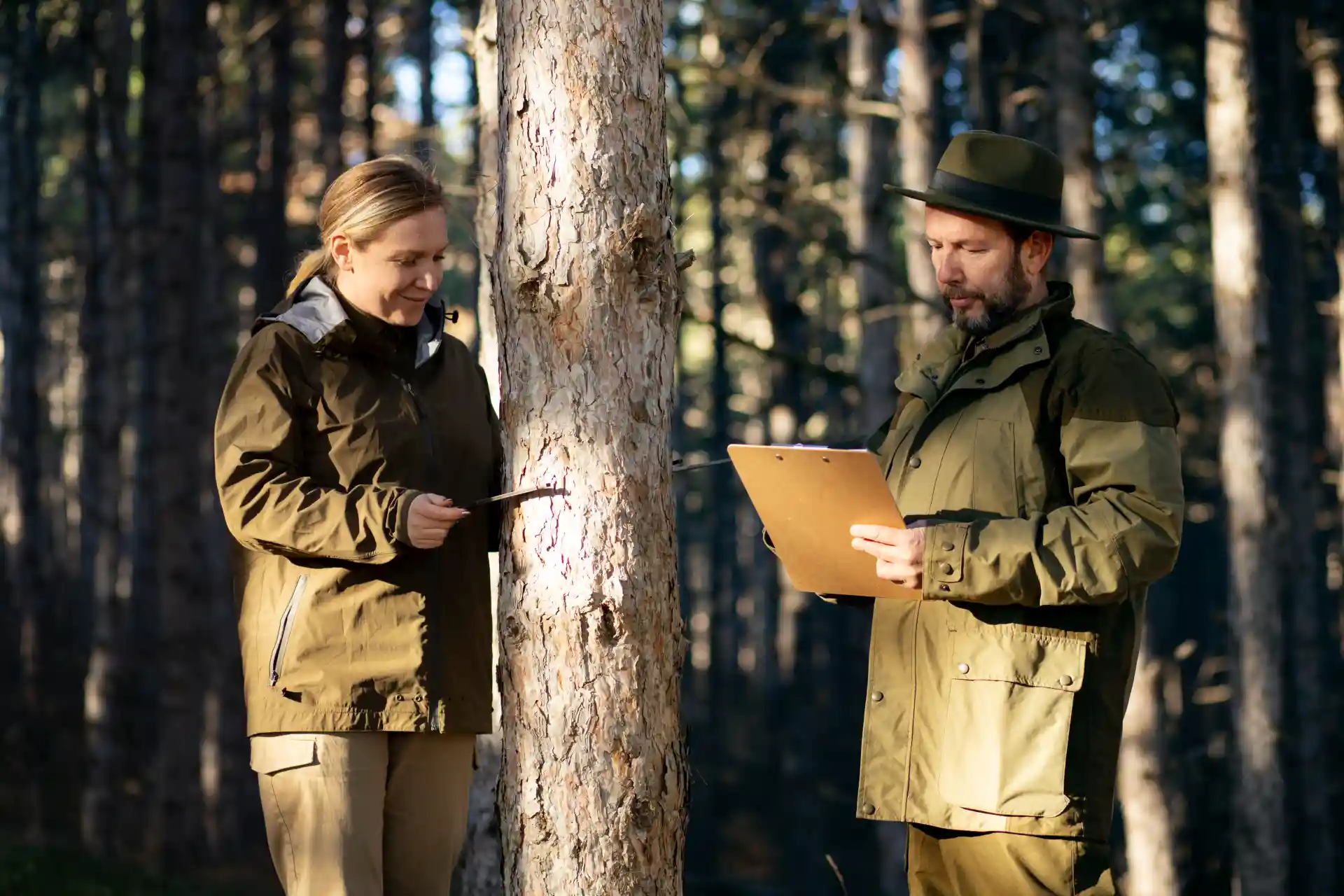You’ve spent months planning your dream vacation. You’ve booked campsites, mapped hiking routes, and packed your gear. Most visitors make the same costly mistakes that rangers see every single day.
Families waste entire days stuck in traffic jams that locals know how to avoid. Hikers get caught in deadly weather that weather apps don’t predict. Campers lose hundreds of dollars because they don’t know the real reservation tricks.
Park rangers watch this happen all day long. They see visitors struggle with problems that have simple solutions. But rangers don’t always share their insider knowledge. You need to know which trails get dangerous in the afternoon. You need to understand how weather really works in the mountains. You need the real strategies for getting campsite reservations.
25 Things Park Rangers Won’t Tell You About Visiting National Parks
#1. The Safety Secrets Rangers Keep to Themselves
You’re planning your next national park trip. You’ve got your hiking boots and camera ready. But there are safety secrets park rangers know that could save your life and they’re not posting them on the visitor center bulletin board.
Why Rangers Ask You Strange Questions at the Entrance
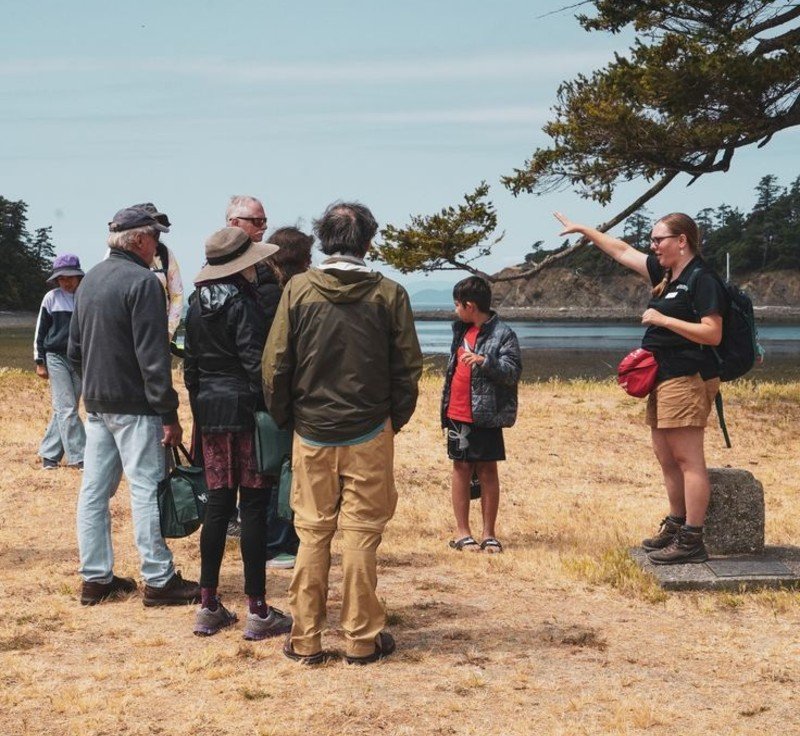
When you drive into a national park, rangers don’t just hand you a map and wave you through. They use something called “Preventative Search and Rescue” questions. These sound casual, but they’re actually checking if you’re about to become their next rescue mission.
“How much water are you carrying?” seems friendly. But rangers know dehydration kills. “What time do you plan to be back?” sounds like small talk. Really, they’re calculating if you have enough daylight for your hike.
The Real Numbers That Will Shock You
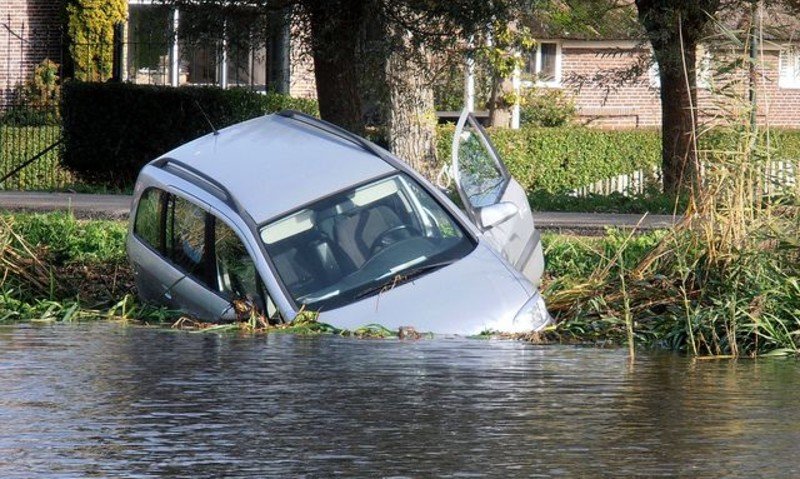
Falls cause 23.59% of all park deaths. Not bear attacks or getting lost simple falls. Car accidents kill 14.13% of visitors, and drowning takes 12.13%. These aren’t exotic dangers. They’re everyday mistakes that turn deadly in wild places.
Men make up 76.3% of all park fatalities. Why? Rangers see it every day: overconfidence and risk-taking. Guys skip the national park safety tips, thinking they don’t need them.
Hidden Dangers You Never Think About
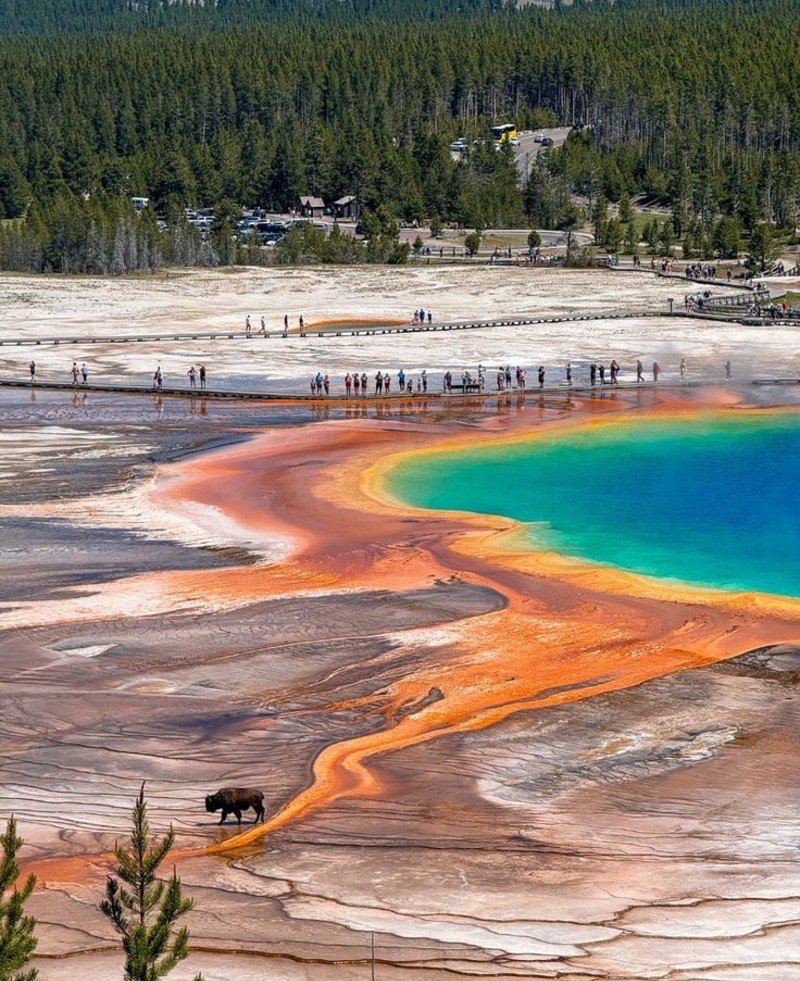
Most visitors worry about wildlife. Rangers worry about flash floods in desert washes, even when it’s sunny. They know thermal features in Yellowstone can kill the water hits 200+ degrees, hot enough to cause third-degree burns in seconds.
Recent incidents at Yellowstone prove this point. Tourists keep leaving boardwalks to get photos near hot springs, not knowing the thin crust around them can break. Several people have died this way in recent years.
#2. Money-Saving Tricks Every Ranger Knows
Park entrance fees are eating your vacation budget. You’re paying $25 to $35 every time you visit a national park, and those costs add up fast. But rangers know money-saving tricks that could cut your park costs by 80% or more.
The $80 Pass That Pays for Itself in Three Visits
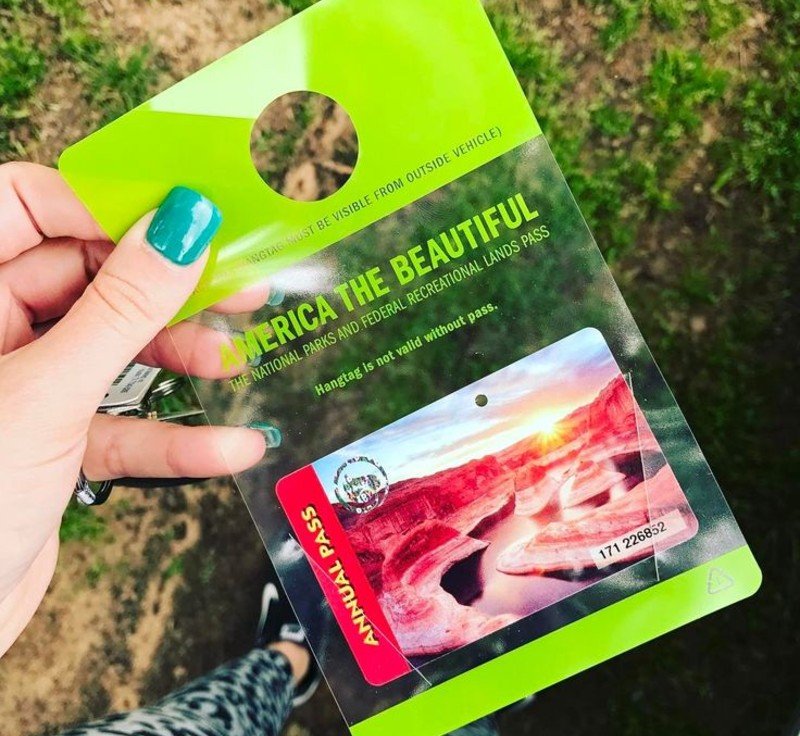
The America the Beautiful annual pass costs $80 and gets you into every national park for a full year. Do the math: if daily park entrance fees run $25-35, you break even after just three visits.
Rangers buy this pass every year because they visit multiple parks. You should too if you’re planning more than two park trips in 2025. The pass covers everyone in your car at parks that charge per vehicle.
Free Entrance Days You Can’t Afford to Miss
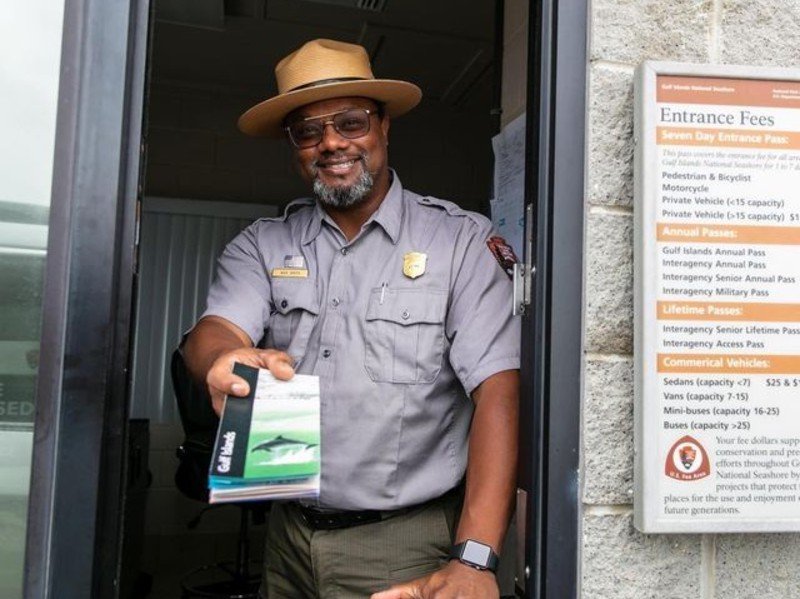
The National Park Service offers six free entrance days in 2025. Mark these dates on your calendar: Martin Luther King Jr. Day, National Park Week (one day), Great American Outdoors Day, National Public Lands Day, and Veterans Day weekend.
These days get crowded, but you save money on park entrance fees. Plan your visit early or late in the day to beat the rush.
The Honor System Loophole Rangers Won’t Advertise
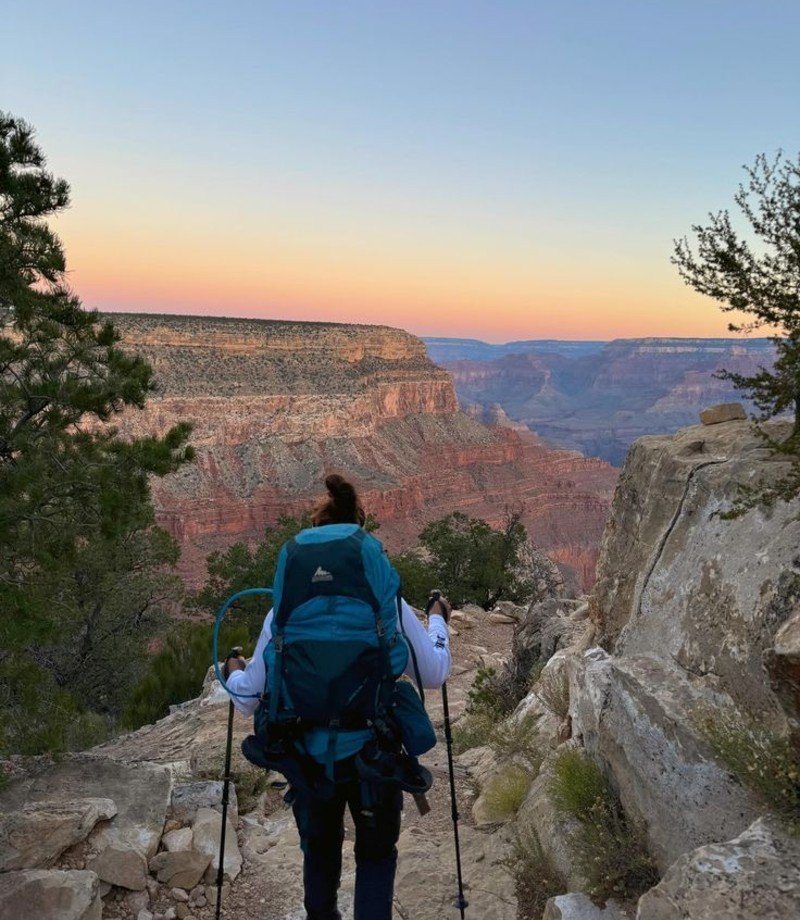
Many parks operate on the honor system before entrance booths open. Show up at dawn, and you might find unstaffed entrance stations with payment envelopes.
You still pay the same fee, but you avoid entrance lines. Plus, you get the best light for photos and cooler temperatures for hiking. Rangers start work later, so early birds get parks almost to themselves.
Age-Based Discounts That Last Forever
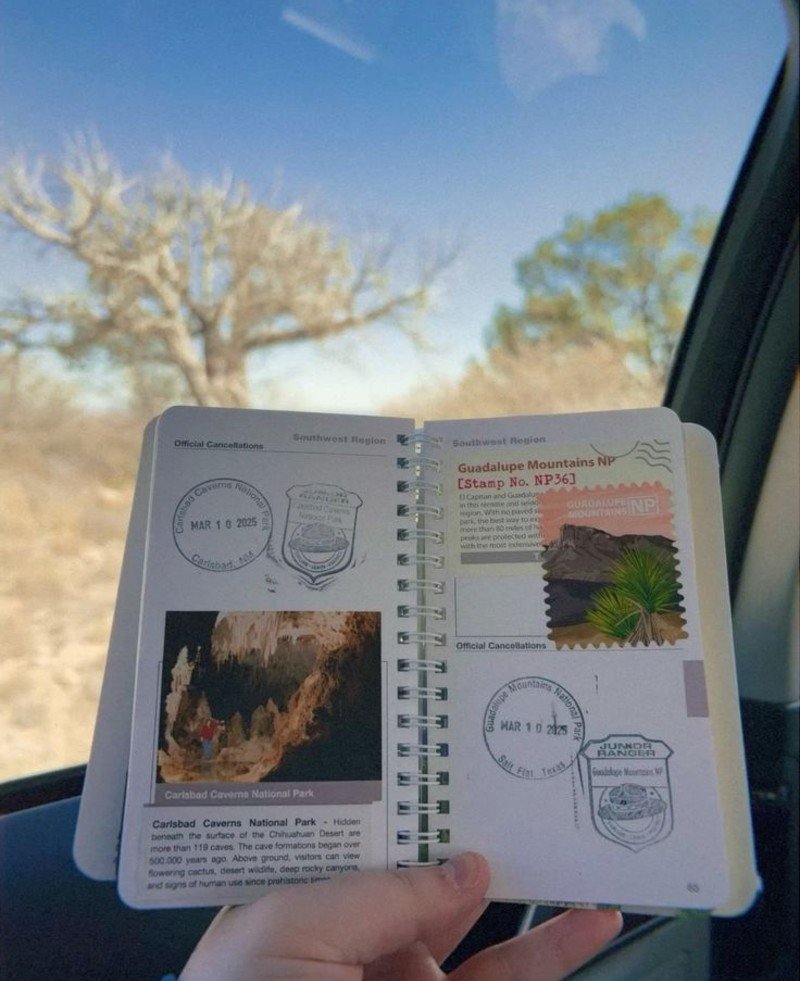
Turn 62? Buy the lifetime senior pass for $80. It never expires and gets you half-price camping fees plus free park entry. Compare that to paying entrance fees for the next 20+ years of retirement travel.
Fourth graders get free annual passes through the Every Kid Outdoors program. The pass works for the whole family when the fourth grader is present. This program gets families to save money national parks while kids learn about nature.
Why Free Ranger Tours Beat $200 Private Guides
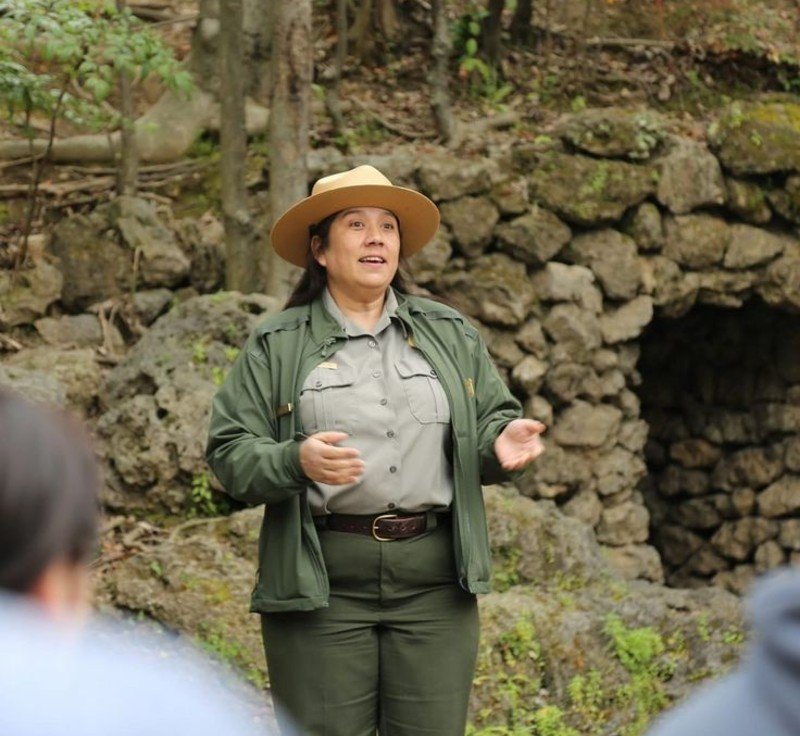
Private tour guides charge $150-200 per person for park tours. Rangers give tours for free, and here’s the secret: rangers know more.
Private guides often share wrong information or made-up stories. Rangers study their parks for years and get updated training. They know which trails close for wildlife activity and where to spot animals. Their expertise comes from living and working in these places daily.
The Fourth Grader Hack Every Family Should Use
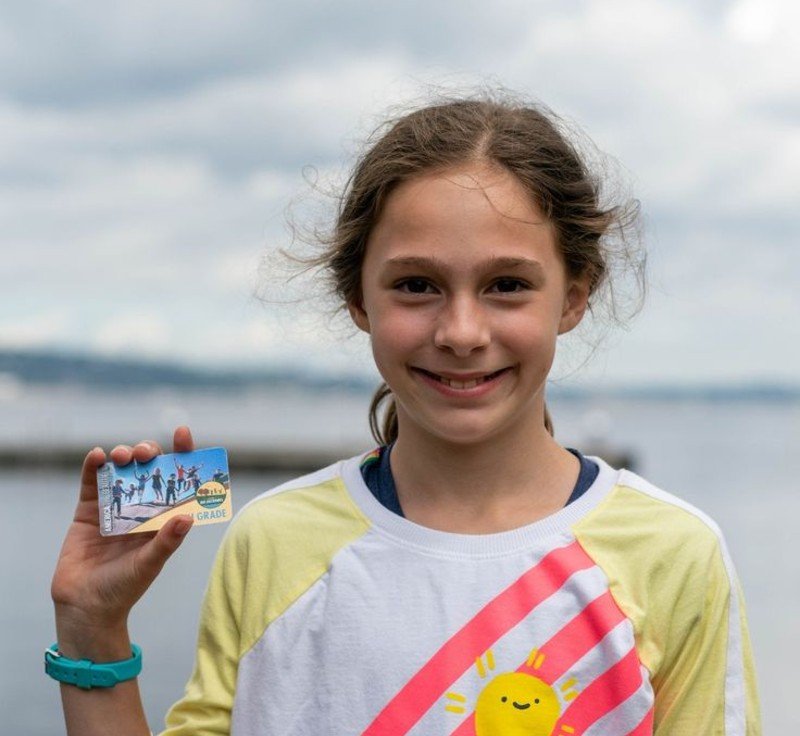
If you have a fourth grader, get their free pass before the school year ends. The pass works through August after fourth grade, giving you a full summer of free park visits. Even if your kid moves to fifth grade, the pass stays valid until expiration.
Rangers see families save hundreds of dollars using this program. One pass gets the whole car into parks that charge per vehicle. That’s potentially free access for parents, siblings, and grandparents too.
#3. The Crowd-Beating Secrets Rangers Use
You’re stuck in traffic jams inside national parks. Parking lots fill by 9 AM, and you can’t find space to spread out your picnic blanket. But rangers know exactly when and where to go to avoid crowds national parks throw at regular visitors.
The 1-Mile Rule That Changes Everything
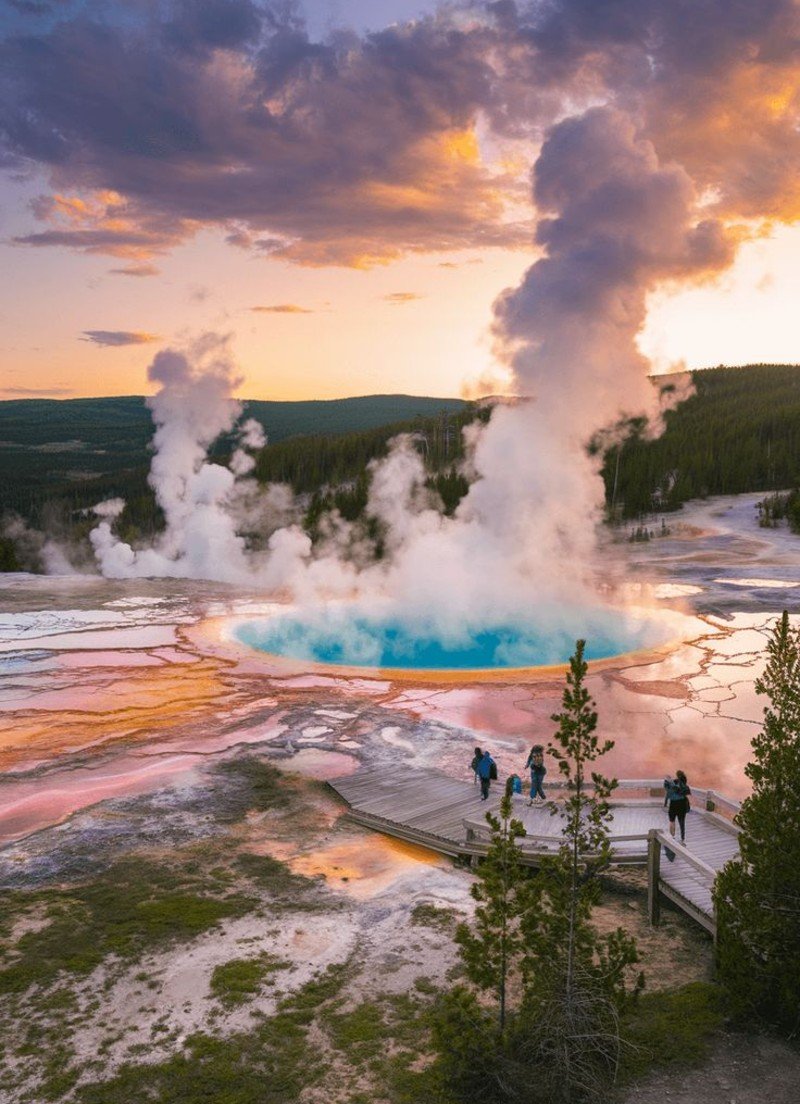
80% of Yellowstone visitors never walk more than one mile from parking areas. This means incredible spots sit empty just beyond that magic distance.
Walk 1.2 miles from any popular viewpoint, and crowds disappear. Rangers use this knowledge during their days off. They park at busy trailheads, then hike past where most people turn around. The payoff? Empty trails and quiet wildlife viewing.
The Golden Hours Rangers Guard Jealously
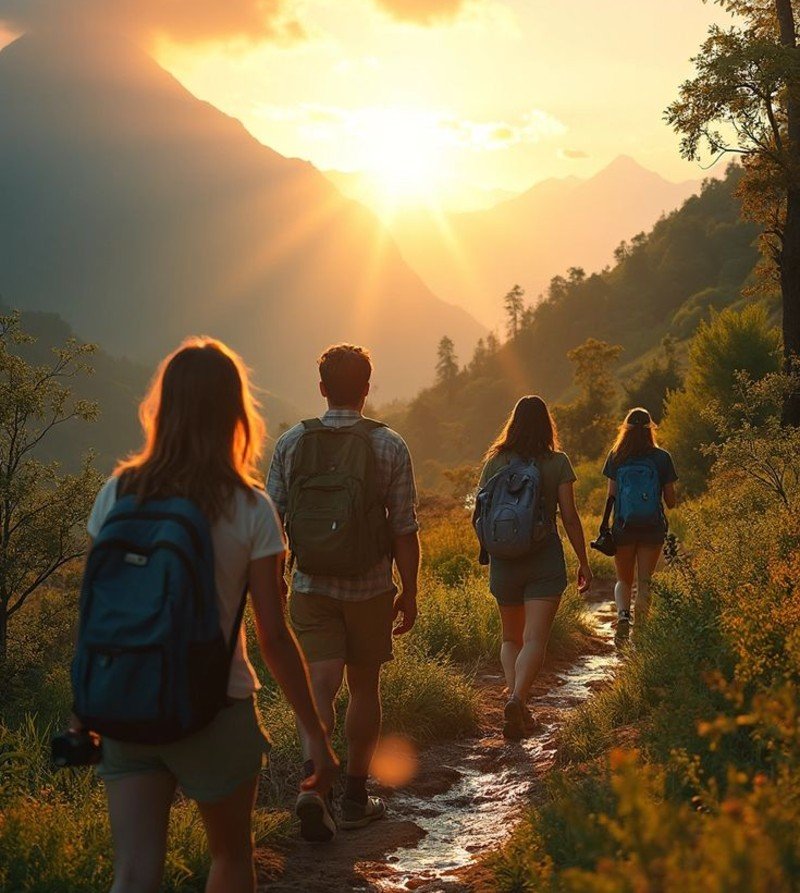
Rangers know the best time visit parks: early morning and late afternoon. Most tourists sleep in and eat lunch during peak wildlife activity times. Animals come out at dawn and dusk when temperatures cool down.
Show up at sunrise, and you’ll have famous spots to yourself. Stay until sunset, and you’ll see more wildlife than midday visitors do. Rangers plan their patrol schedules around these quiet hours when they can actually enjoy the parks they protect.
Secret Park Swaps That Feel Like Insider Knowledge
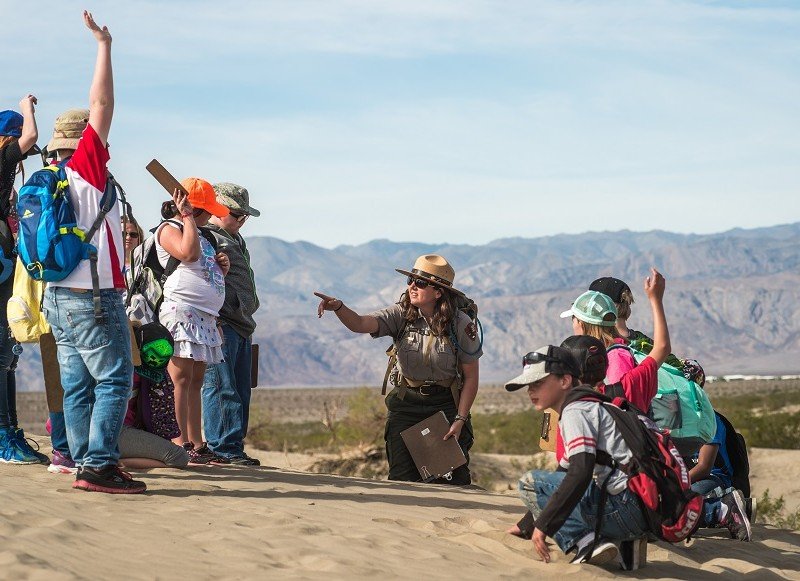
Rangers vacation at lesser-known parks that offer the same experiences without the crowds. Instead of fighting traffic at Grand Canyon in summer, they visit Death Valley. It’s still desert scenery, but with parking spaces and empty trails.
Skip crowded Yosemite for Kings Canyon. You get the same granite cliffs and waterfalls with 90% fewer people. Rangers choose Capitol Reef over Zion because both have amazing red rock formations, but Capitol Reef doesn’t require shuttle reservations.
Off-Season Strategies Rangers Live By
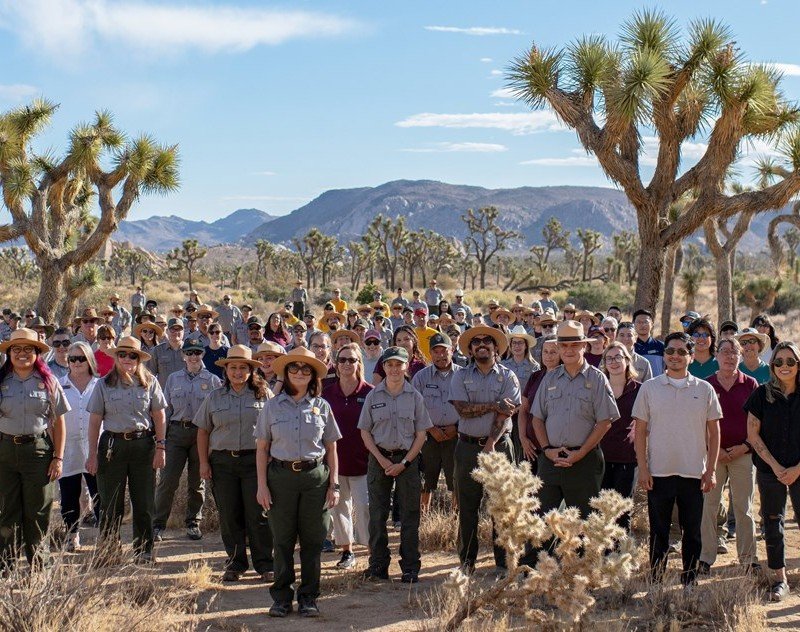
Winter visits to desert parks like Joshua Tree and Big Bend offer perfect temperatures while summer destinations sit empty. Rangers take vacation time during shoulder seasons when weather stays good but tourists stay home.
Spring and fall give you the best of both worlds: comfortable weather and smaller crowds. Rangers know April and October work best for most parks. Kids are in school, summer vacation season hasn’t started, and weather cooperates for hiking.
#4. What Rangers Really Do (That Tourists Never See)
You think park rangers just give directions and collect entrance fees. But when you drive away from the visitor center, rangers switch into roles that would surprise you. Their real ranger life happens behind the scenes, and it’s nothing like what most people imagine.
Living Inside the Parks Most People Only Visit
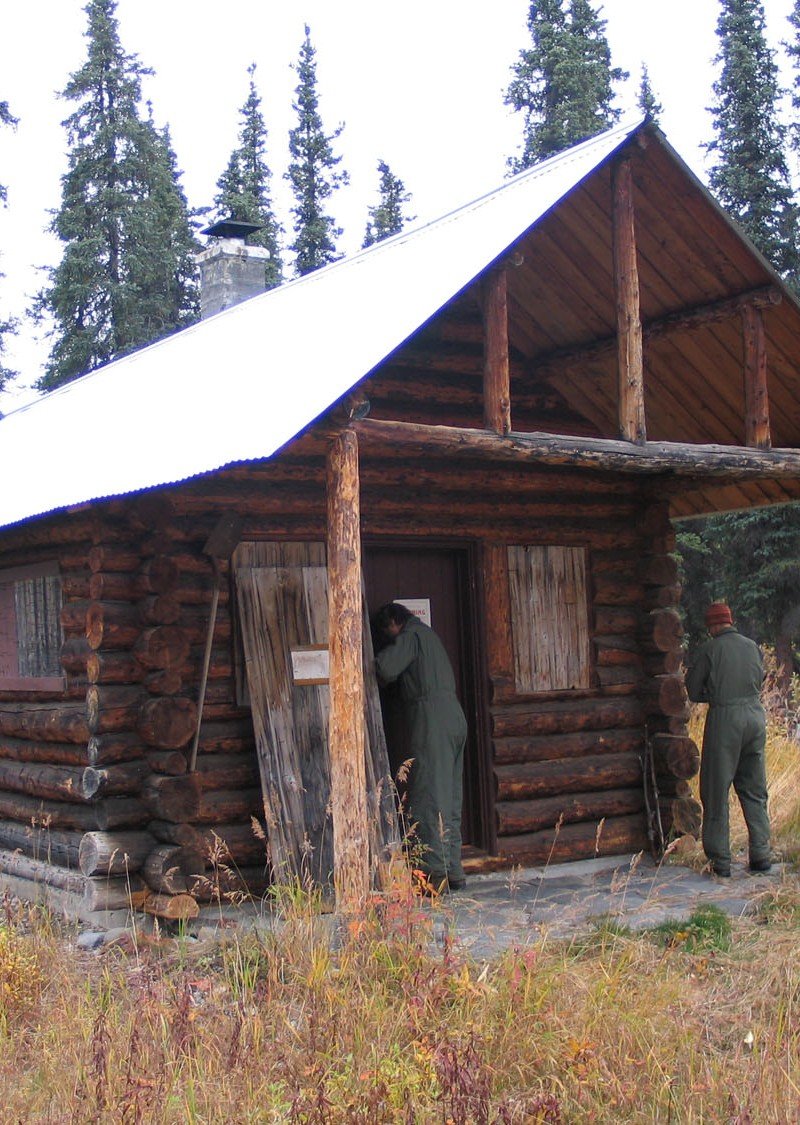
Rangers don’t commute to work from suburban homes. They live in remote cabins inside the parks, sometimes 50 miles from the nearest town. Their neighbors are bears, not other families. Internet comes and goes. Cell service barely works.
This isolation shapes everything about park ranger duties. When someone gets hurt on a trail, rangers can’t call for backup from the city. They handle medical emergencies alone until helicopters arrive if weather allows flying.
The Jobs Nobody Talks About
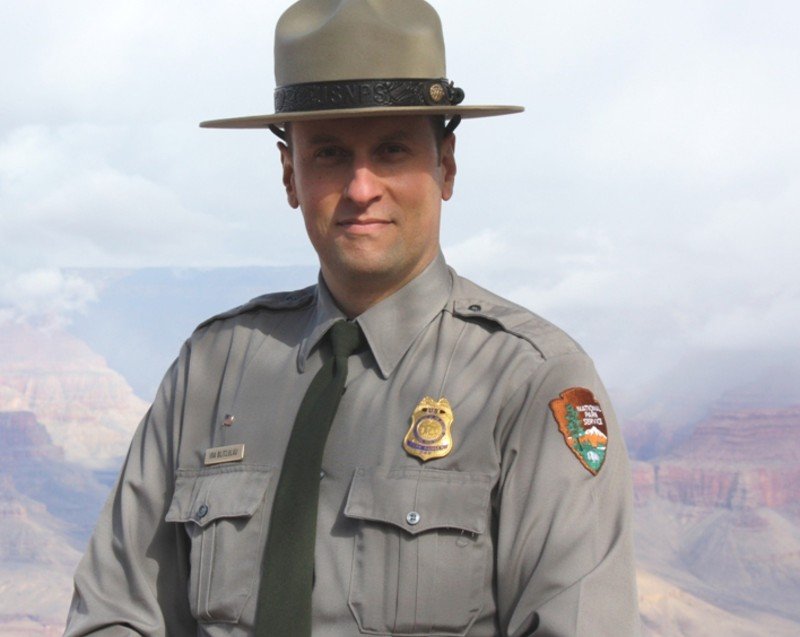
Rangers wear many hats, and most aren’t pretty. They’re police officers who arrest drunk campers and break up fights. They’re firefighters who battle wildfires with hand tools. They’re paramedics who perform CPR on heart attack victims miles from hospitals.
Rangers also handle biological research, collect water samples, count animal populations, and yes, clean bathrooms when maintenance staff call in sick. One day they’re tagging endangered species, the next they’re plunging toilets at busy campgrounds.
Radio Codes and Secret Communications
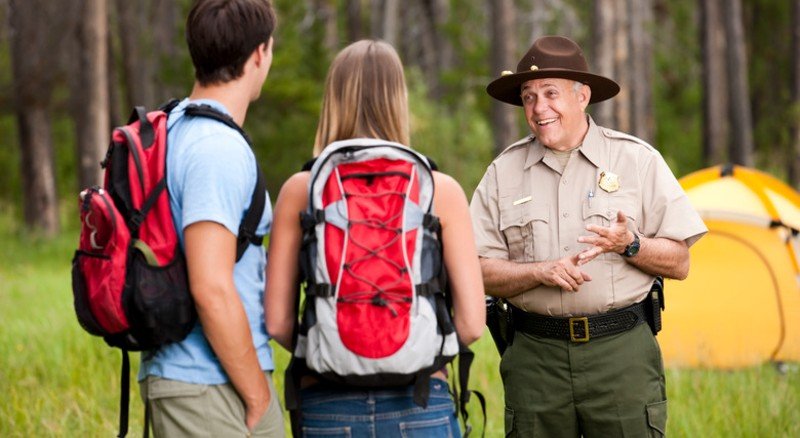
Rangers use radio codes tourists never hear. “Code Red” means medical emergency. “Code Blue” means someone died. “Signal 13” means officer needs help immediately. These conversations happen on channels you can’t access, discussing situations that would change how you think about park visits.
Behind the scenes, rangers coordinate with FBI agents, medical examiners, and search-and-rescue teams. They write detailed incident reports about everything from minor injuries to criminal investigations. The paperwork side of ranger work takes hours every day.
The Staffing Crisis Nobody Wants to Discuss
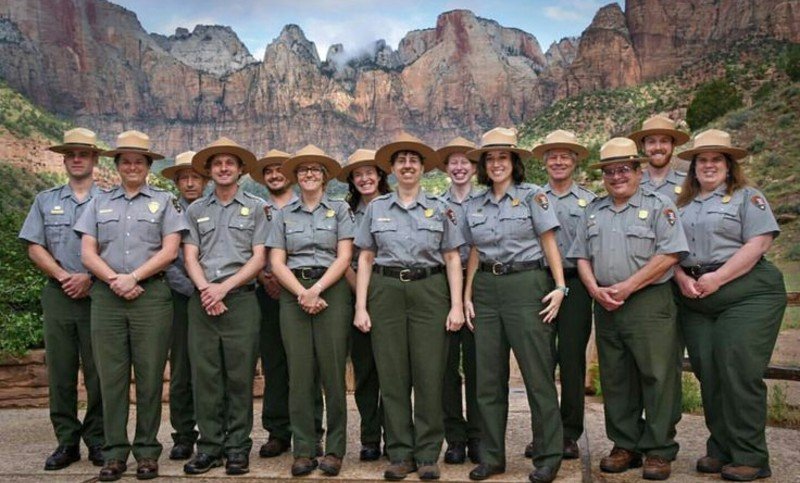
Parks need more rangers, but can’t find people willing to work for low pay in isolated locations. Current rangers work longer hours covering duties that used to require full teams.
This staffing crisis affects everything you experience as a visitor. Fewer rangers means longer waits for help, reduced educational programs, and delayed maintenance on trails and facilities. Rangers stretch themselves thin trying to maintain service levels with skeleton crews.
What This Means for Your Next Visit
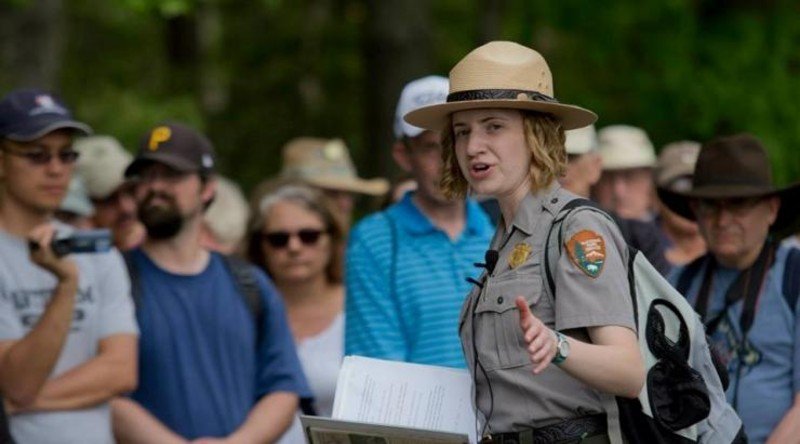
Understanding what rangers really do changes how you interact with them. They’re not just friendly faces at entrance stations they’re highly trained professionals handling serious responsibilities. When rangers give safety advice, they’re drawing from experience with real emergencies, not reading from scripts.
Show rangers respect and patience. They’re dealing with much more than your vacation questions, and they’re doing it with fewer resources than ever before.
#5. Wildlife Encounters
You’re planning to get that perfect wildlife photo for Instagram. But getting close to national park animals isn’t just dangerous it’s a federal crime that could cost you $5,000 and six months in jail. Rangers know wildlife safety rules most tourists ignore until it’s too late.
The Distance Rules That Save Lives
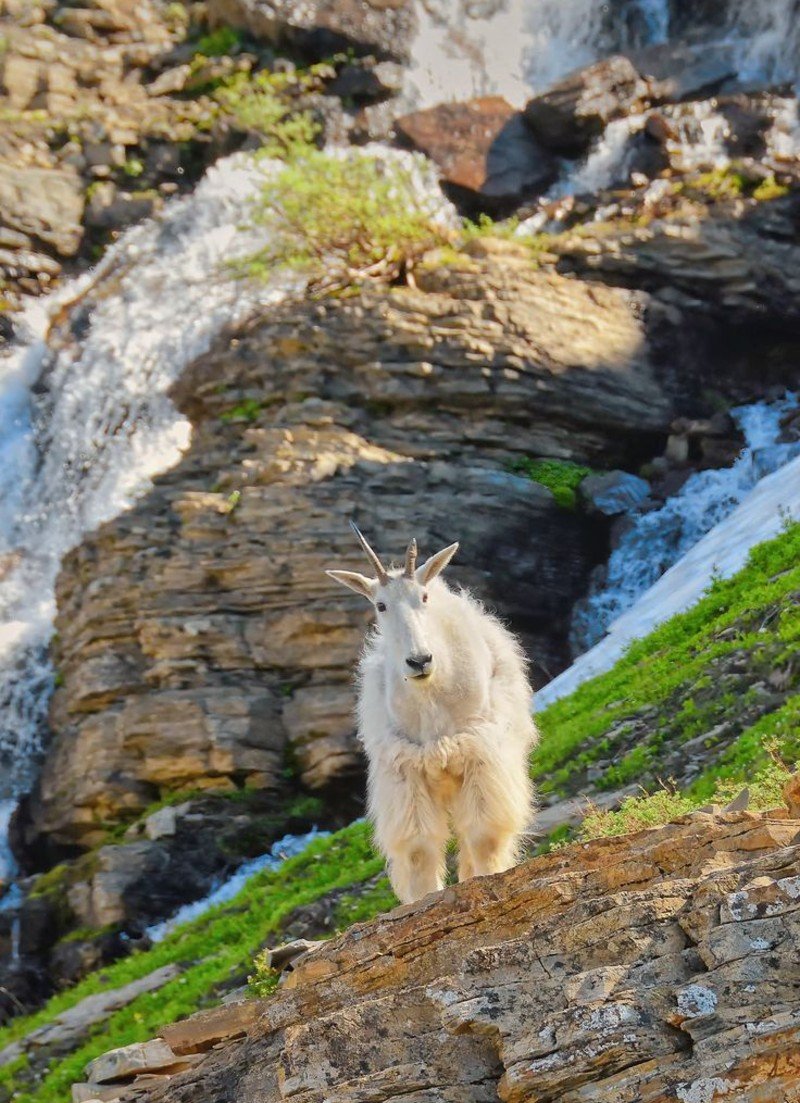
Stay 100 yards from bears and wolves, 25 yards from all other animals. That includes bison, elk, moose, and mountain goats. Rangers enforce these distances because they’ve seen what happens when people get too close.
Use the “thumb rule” for safe wildlife viewing distance. Hold your arm straight out and stick up your thumb. If your thumb doesn’t completely cover the animal, you’re too close. Move back until the animal disappears behind your thumb.
Why Bison Kill More People Than Bears
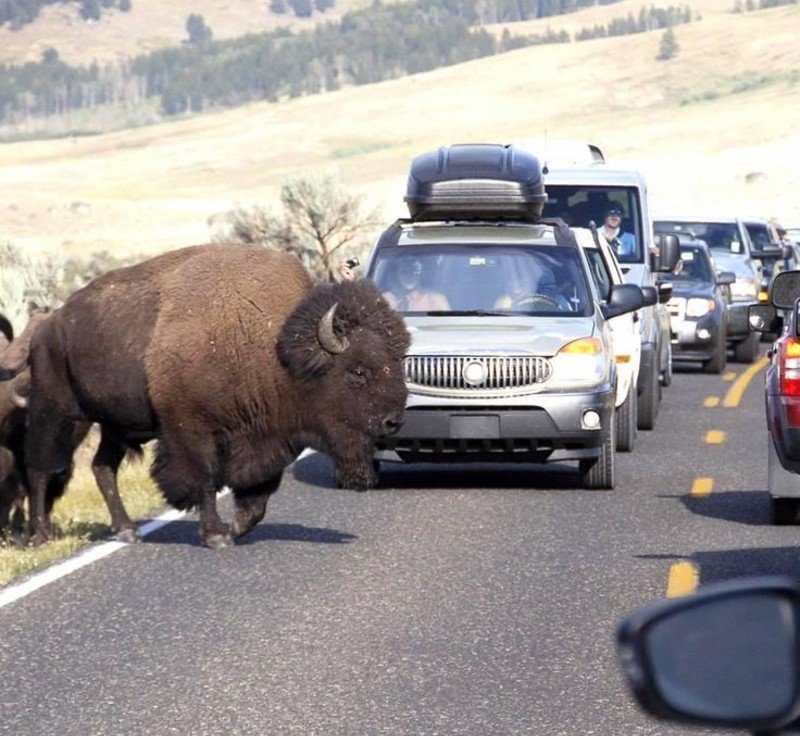
More people die from bison attacks than any other animal in Yellowstone. Bison weigh 2,000 pounds and run 35 mph three times faster than humans. They look calm and slow, but they’re wild animals that attack without warning.
Recent bison incidents at Yellowstone show the same pattern: tourists approach for photos, bison feel threatened, people get gored or trampled. Rangers see this cycle repeat every summer because visitors treat 2,000-pound animals like farm cows.
Animal Behavior Signs Rangers Watch For
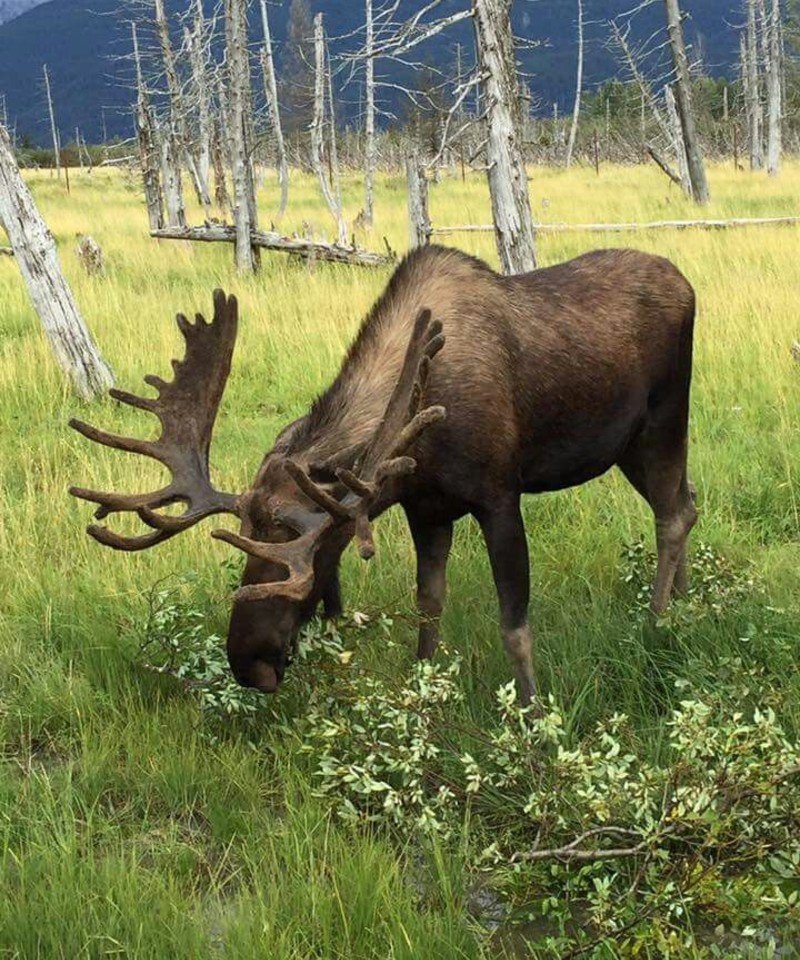
Rangers know when animals are about to charge. Bison raise their tails, stomp their feet, and snort before attacking. Bears stand on hind legs to get better views, not to threaten. Elk bugle during mating season and become extremely aggressive.
Moose drop their ears back and raise their hackles when angry. Mountain goats lower their heads and point horns forward. These signs happen fast, and by the time tourists notice them, it’s often too late to escape safely.
Photography Rules That Keep You Out of Jail
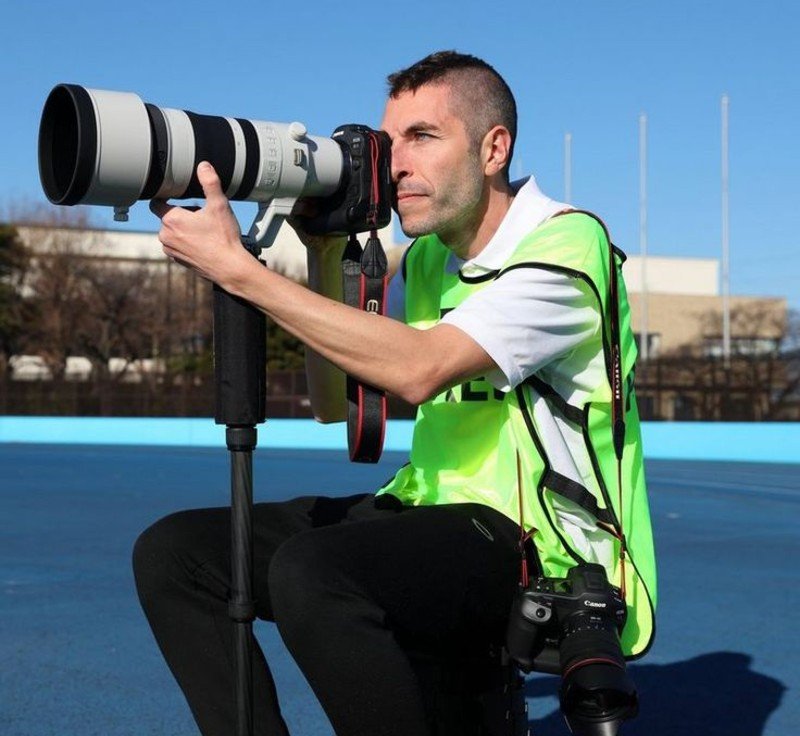
Want great wildlife photos? Buy a telephoto lens instead of risking your life getting close. Rangers arrest people every week for approaching animals with phone cameras. The photos aren’t worth federal charges and hospital bills.
Professional wildlife photographers use 400mm lenses or longer to stay legal distances from subjects. Your phone camera won’t capture good wildlife shots from safe distances and that’s not the animals’ problem to solve.
What Happens When You Break Wildlife Laws
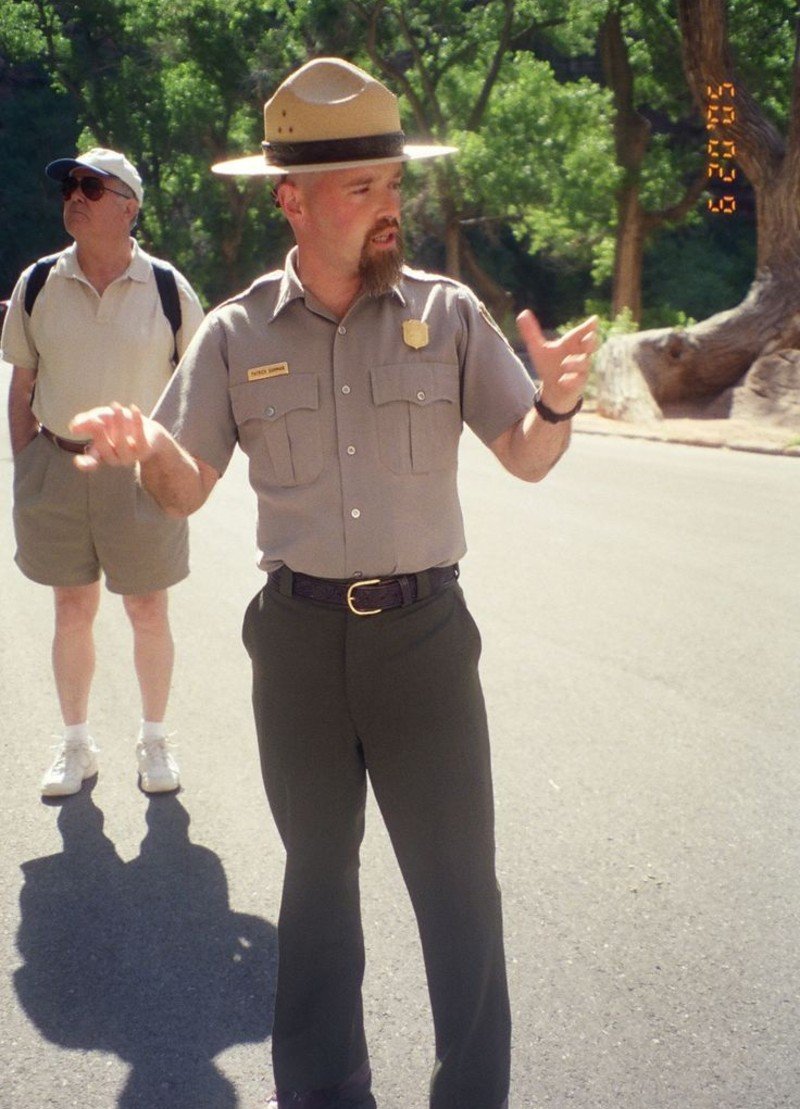
Approaching wildlife is a federal crime with serious consequences. Rangers have full law enforcement authority and will arrest you on the spot. Court appearances, fines, and possible jail time follow. Your vacation becomes a legal nightmare.
But forget legal consequences for a moment. Getting gored by a bison or mauled by a bear means helicopter evacuations, major surgery, and lifetime disabilities. Rangers have seen tourists lose eyes, break bones, and suffer permanent injuries from wildlife encounters.
#6. Weather Dangers Rangers Won’t Advertise
You’ve planned the perfect park trip. Clear skies on the weather app. But here’s what the rangers know that you don’t: park weather can turn deadly in minutes.
Flash Floods Hit Without Warning
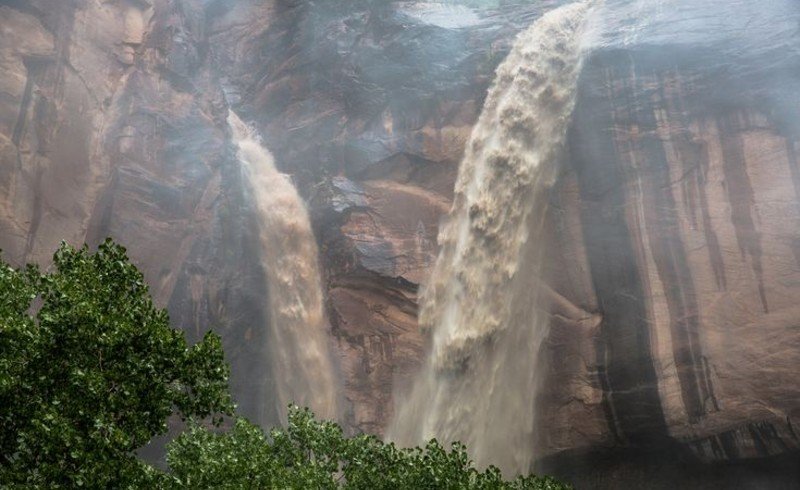
That sunny morning hike? It could kill you by afternoon. Flash floods in canyons come from storms 20 miles away. You won’t see the rain coming. The water moves faster than you can run. It carries boulders like toys.
Check upstream weather before you enter any narrow canyon. If storms hit anywhere in the area, get to high ground fast. Don’t try to outrun moving water.
Lightning Strikes More Than You Think
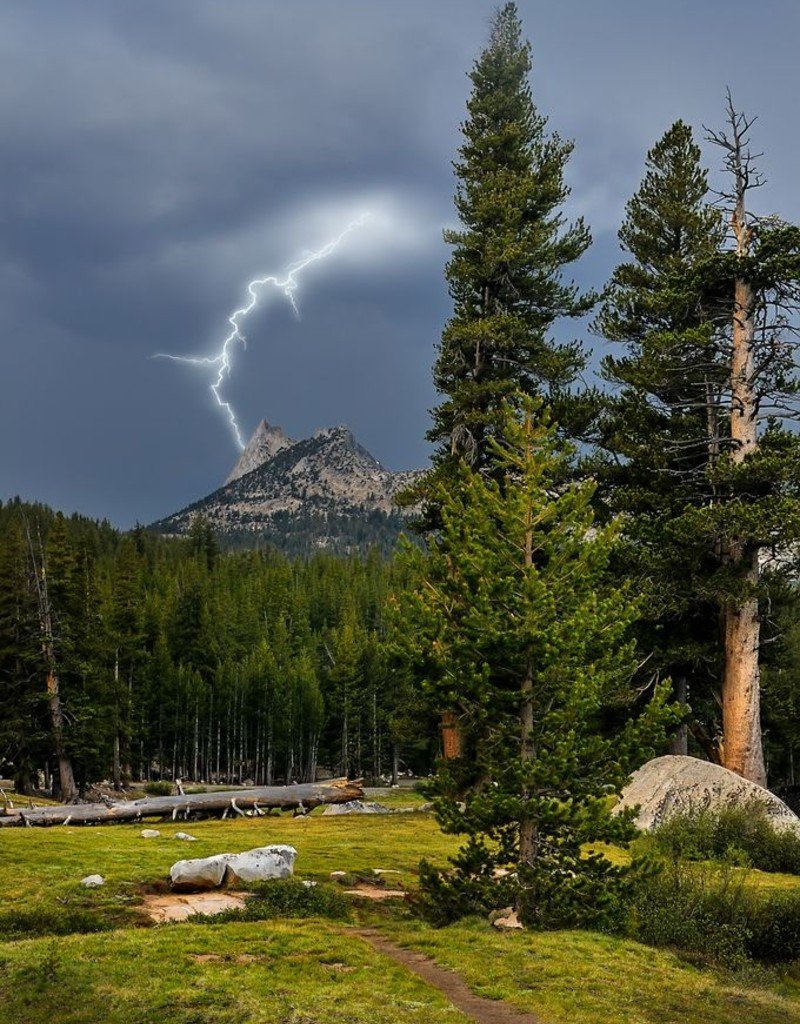
Mountains make their own weather. That small cloud can become a lightning factory in 30 minutes. Above treeline, you’re the tallest thing around. You’re basically a lightning rod with legs.
Weather safety experts say start coming down when you see any clouds building. Don’t wait for thunder. If your hair stands up or you hear buzzing, drop to your knees immediately. Put your feet together and stay low.
Summer Hypothermia Kills
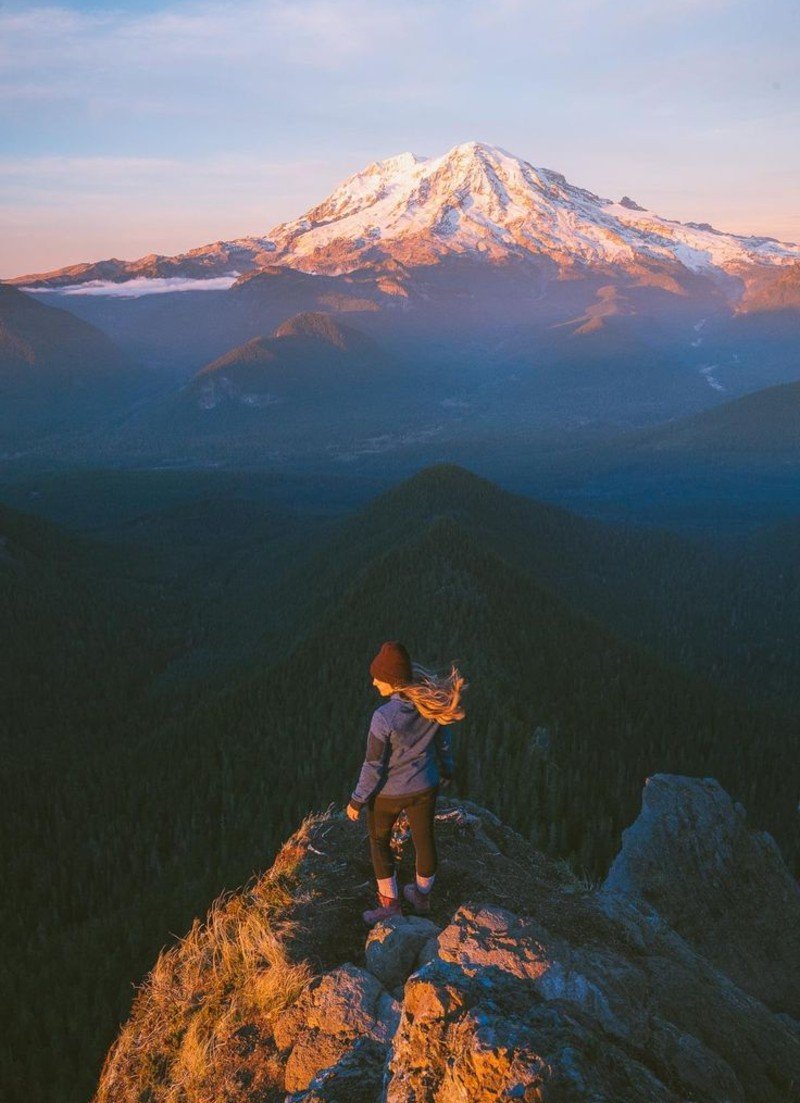
“It’s July. How cold can it get?” Famous last words. At 10,000 feet, temperatures drop 40 degrees when the sun goes down. Add wind and rain, and you’re in trouble.
Park weather changes in minutes at altitude. That 70-degree morning becomes a 35-degree nightmare by evening. Wet cotton clothes make it worse. Your body loses heat 25 times faster when you’re wet.
Heat Exhaustion Sneaks Up Fast
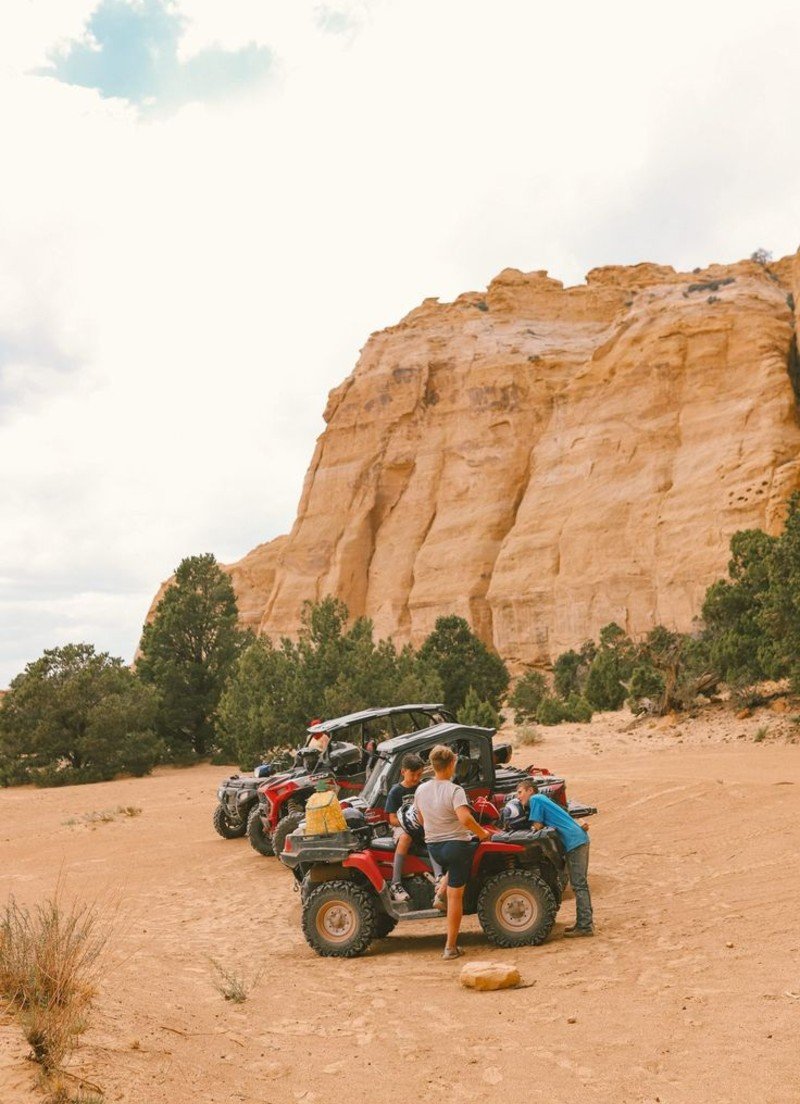
Desert parks fool people. “It’s dry heat” becomes “why am I dizzy and sick?” Your sweat evaporates so fast you don’t realize you’re dehydrating.
Drink water before you feel thirsty. If your pee is dark yellow, you’re already behind. Heat exhaustion feels like the flu. You get dizzy, nauseous, and weak.
Weather Changes Happen in Minutes
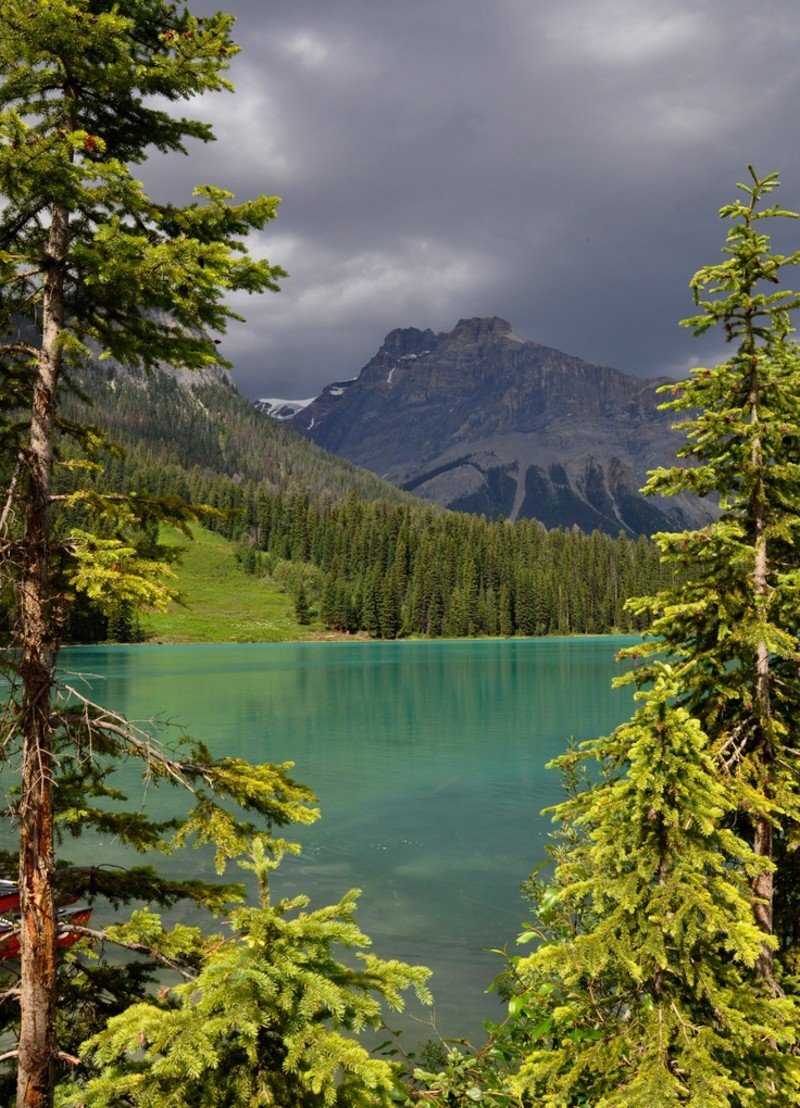
Mountain weather has its own rules. Morning sun becomes afternoon hail. Calm winds turn into 60-mph gusts. Temperature drops 20 degrees when clouds roll in.
Check weather every few hours, not just once in the morning. Turn back if conditions look bad. The mountain will be there tomorrow. You might not be.
#7. The Camping and Lodging Secrets
Want to camp in popular national parks? The reservation system feels rigged. But rangers know tricks that regular visitors don’t.
Rangers’ Reservation Strategies
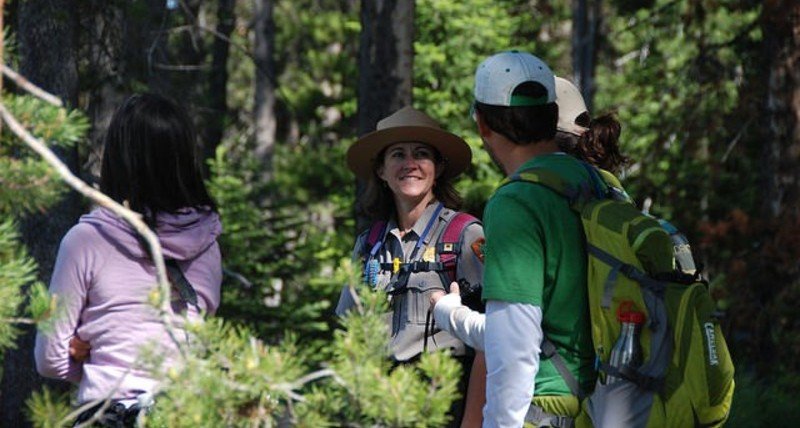
Book exactly 5 months ahead at 8 AM Eastern time. Not 7:59. Not 8:01. Set multiple alarms. Have your payment info ready.
Check for cancellations 24-48 hours before your trip. People cancel last-minute more than you think. Rainy weather forecasts create lots of openings.
Create accounts for every family member. Each person can try booking the same dates. You’ll have better odds than going solo.
Best Campground Locations Most People Miss
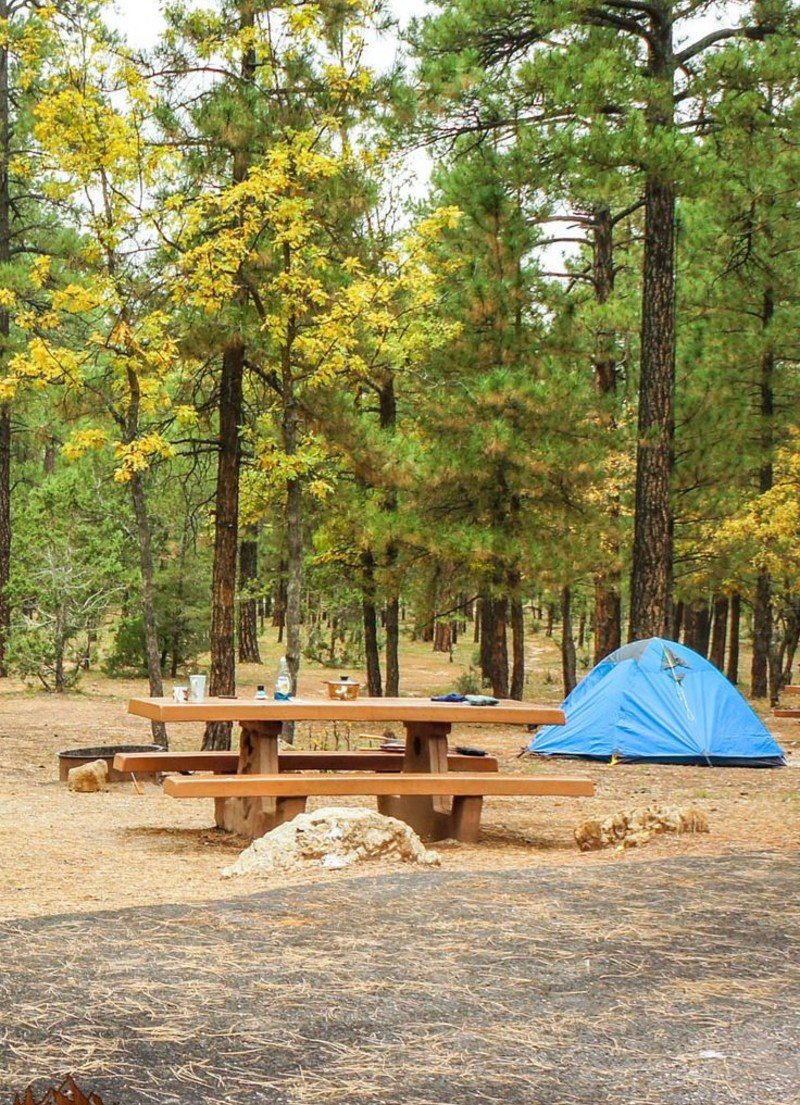
Everyone wants sites near bathrooms and water. Smart campers pick spots 2-3 sites away. You get the convenience without the noise and foot traffic.
Corner sites give you more privacy. End-of-loop sites have fewer neighbors. Sites on the outside of the campground loop get less through traffic.
Avoid sites next to the camp host. They’re usually by high-traffic areas. Look for natural barriers like rocks or trees between sites.
Bear-Resistant Storage Rules They Don’t Explain Well
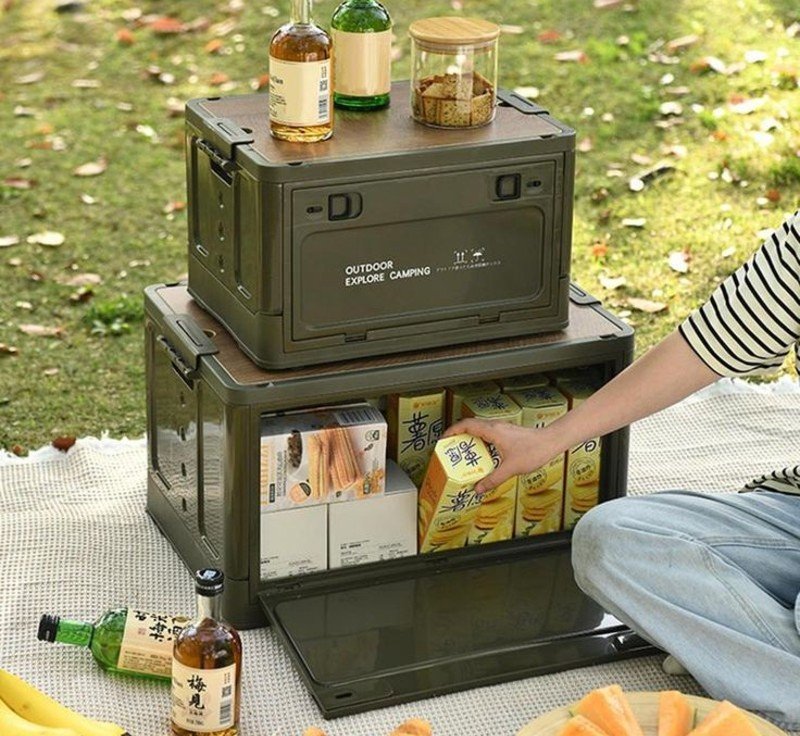
Food storage isn’t just about bears. Mice, raccoons, and ravens cause problems too. Everything with a smell goes in the bear box. That includes toiletries, sunscreen, and trash.
Close the bear box completely or it won’t latch. Test the handle before walking away. If animals get in once, they’ll keep coming back to your site.
Backcountry vs Frontcountry: What Works for You
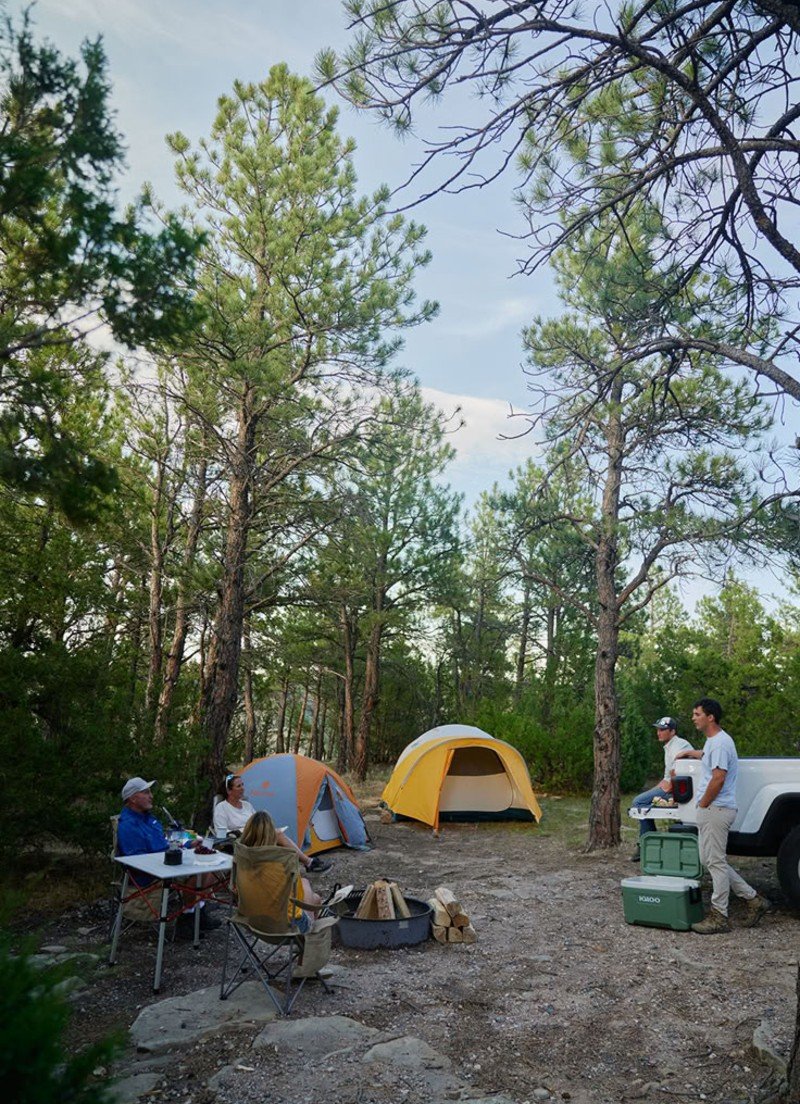
National park camping in developed campgrounds means flush toilets and running water. But you’ll fight crowds for everything. Showers have lines. Sites pack together.
Backcountry camping requires permits and planning. You’ll hike to your spot. But you get real wilderness and quiet nights. No RV generators at 6 AM.
Try frontcountry first if you’re new to camping. The convenience helps you learn what gear you need.
Last-Minute Reservation Tricks
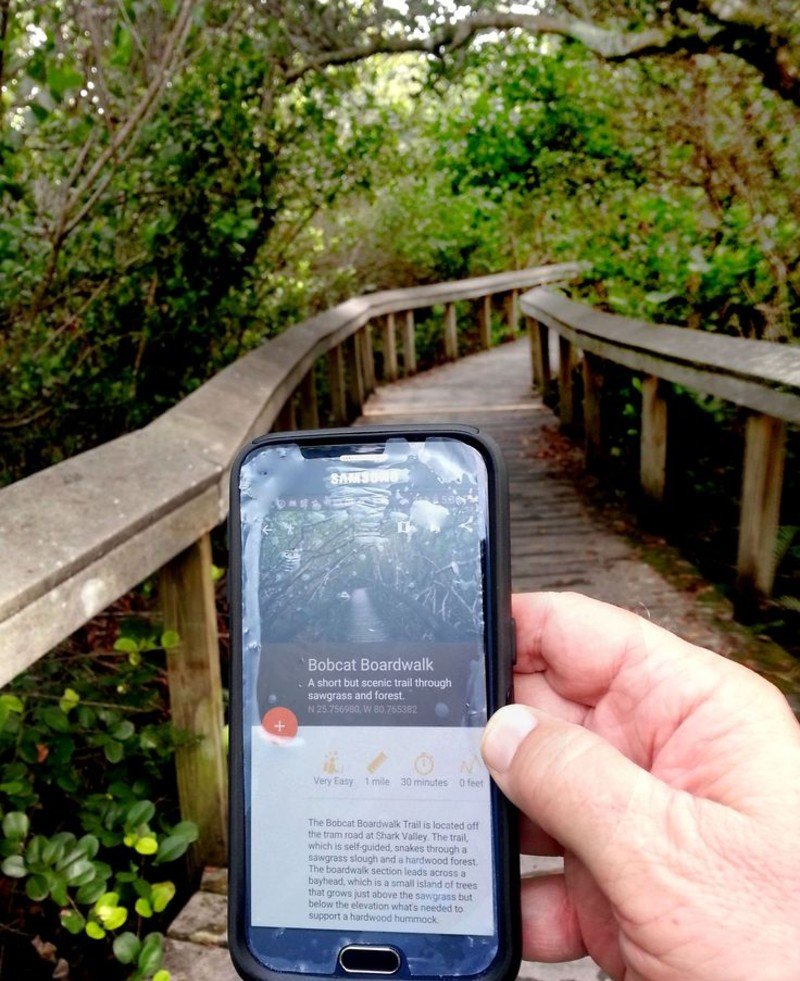
Monday mornings see the most cancellations. People change weekend plans. Tuesday through Thursday have fewer people checking for openings.
Download park apps and set up alerts. Some parks release canceled sites at specific times. Call the reservation line during lunch hours when fewer people are trying.
Winter Camping Reality Check
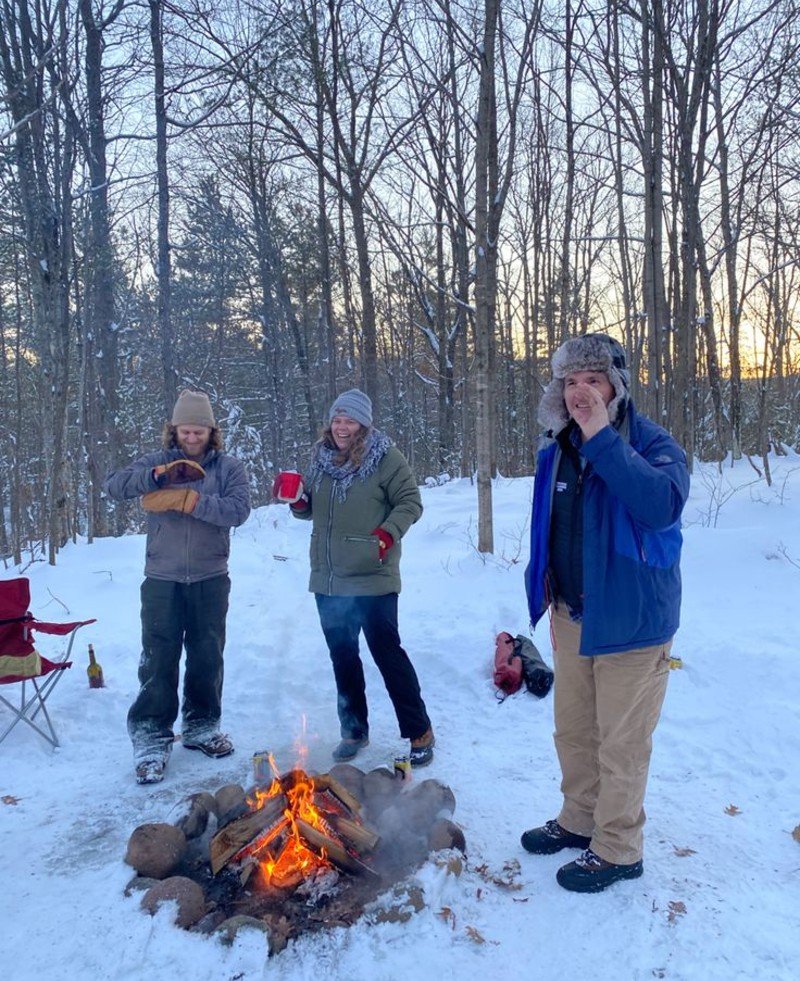
Campground tips for winter: most facilities close. Water spigots shut off. Bathrooms might be locked.
But winter national park camping offers empty parks and lower fees. Just bring serious cold-weather gear and extra food. Your car might not start in the morning.
Check which campgrounds stay open year-round. Some parks offer winter camping programs with heated bathhouses.
FAQs
Why Can’t I Get Campground Reservations Even Months Ahead?
The reservation system opens exactly 5 months in advance at 8 AM Eastern time. Popular sites sell out in minutes. Millions of people try to book at the same time.
What Should I Actually Do If I See a Bear?
If the bear hasn’t seen you, back away slowly and leave the area. If it sees you, make yourself look big. Raise your arms or jacket over your head. Talk in a calm, loud voice.If a black bear attacks, fight back with everything you have.
What Gear Do I Actually Need for a Day Hike?
Bring more water than you think you need. One liter per person per 2 hours of hiking. Extra food gives you energy if you get lost or delayed. First aid kit, headlamp, and whistle help if things go wrong. Tell someone where you’re going and when you’ll be back.
What Are the Hidden Costs Nobody Warns You About?
Park entrance fees are just the start. Camping adds $25-50 per night. Popular activities need separate permits that cost extra.

